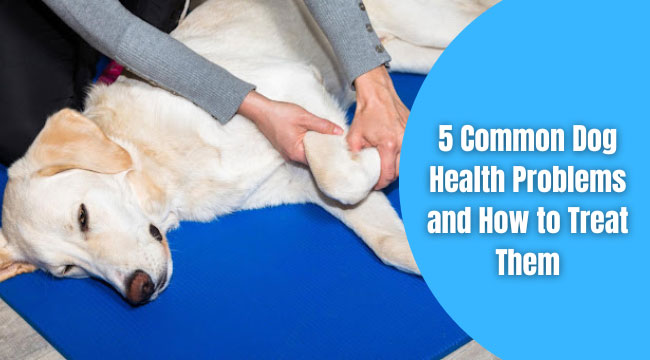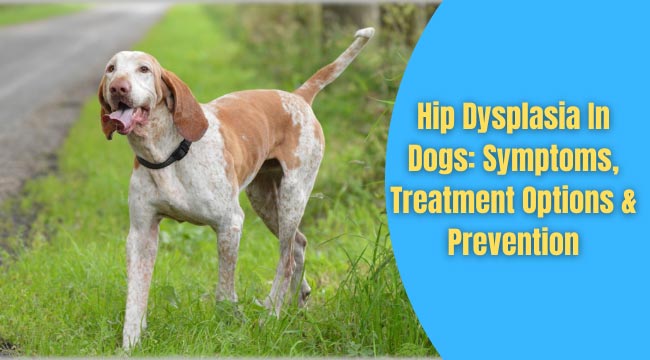
This is more heartbreaking than seeing our little munchkins sick. The house seems dull when our super energetic dogs fall sick. All of us as dog parents have thought about – how to take care of a sick dog? And thus, I have created this guide today after carrying out thorough research to make sure that I cover everything which will assist you in providing the best care to your sick dog. Pursue reading to find out more.

Read More:
- Best Dog Food That’s Delicious & Healthy
- Can You Feed Some Halloween Pumpkin To Your Pet?
- how to care for a sick dog | Recommendations to Make it Easy for Both of You
- Is Lamb And Rice Dog Food Good For The Dog?
- Top 7 Signs Your Dog May Be Sick
Why Does a Dog Lose Their Appetite?
Whether you’ve had dogs for years or are just getting your first puppy, it may be incredibly upsetting when your dog refuses to eat. A number of factors can cause loss of appetite in dogs. It is necessary to figure out the problem at its root cause in order to develop the most effective treatment approach. This way, you will be taking care of your dog in the right way.
The first thing to consider is how you assess your dog’s hunger. If you’re concerned that your dog isn’t eating as much as the instructions on the food you’re buying suggest, keep in mind that these are merely averages. Many perfectly healthy dogs consume barely 60% to 70% of the quantity specified on the package.
Because loss of appetite in dogs can be an indication of sickness, it is critical to seek veterinary attention if you detect any changes in your dog’s eating habits. It is especially critical to respond quickly to a reluctance to eat in dogs who normally eat well.
Even while most dogs can survive a few days without food with no adverse consequences, it is necessary to deal with the problem as soon as possible.
Reasons why your dog refuses to eat
Dogs, like humans, may refuse to eat for a number of reasons. These are some examples:
Illness
A reduced appetite in dogs is frequently an indication of illness, especially if your canine is experiencing other symptoms. Although the loss of appetite in canines does not always signal serious disease, it is crucial to seek immediate veterinarian assistance since it might be an indication of serious sicknesses, such as cancer, numerous systemic infections, discomfort, liver issues, and renal failure.
The disease of the teeth.
Because anything in your dog’s mouth is causing pain, it may refuse to eat. Examine them for damaged or loose teeth, severe gingivitis, and possibly an oral tumor.
Recent immunization.
Fortunately, vaccines for many dangerous and infectious canine illnesses are available. It cannot be denied that these treatments have saved the lives of millions of pets over the last century; they can have unintended consequences. The majority of them are mild and only last a few days, such as a transient reduction of appetite in dogs.
Travel and being in unknown surroundings
If your canine’s appetite was good until you took them on a trip or moved to a new area, it’s possible that they won’t eat because of the travel or the unusual surroundings. Some animals are prone to experiencing motion sickness, while others may become apprehensive or uncomfortable in unfamiliar surroundings.
Pickiness or behavioral problems
Some dogs are just fussy, and their unwillingness to eat may be induced by feeding them in settings where they aren’t at ease, such as alongside a hostile dog or from a dish at an awkward height. Because a decreased appetite in dogs might be caused by sickness, you should never assume your dog is fussy without first ruling out other options.
When Should You Contact Your Vet?

If your dog exhibits any of the following symptoms, get quick medical assistance from your veterinarian or an emergency vet clinic:
- Even though he appears to be acting normally, he may have open wounds, broken bones, or injuries as a result of trauma or event, such as a fall or getting struck by a vehicle.
- Breathing pauses or unconsciousness
- Seizure
- Breathing difficulties or sudden collapse
- Bleeding from the nose, mouth, or eyes
- Poisoning might occur as a result of eating something harmful.
- Vomiting more than once in an hour or vomiting blood
- With no food coming up, I’m retching and attempting to puke (a symptom of bloat)
- Extreme discomfort showed as moaning or shaking.
- Abdomen that is hard and bloated
- urinary incontinence
- Breathing is difficult.
- Puppy-birthing difficulties (over two hours between puppies)
- Toxins such as chocolate, deadly plants, sugar-free items containing xylitol, grapes or raisins, and rat poison
- Inability to stand, tremors, or dragging of limbs.
- The disorientation that occurs suddenly
- Gums are a light tint (very important for owners to check gums regularly for abnormalities)
Discuss this list with your veterinarian since there may be other additions or clarifications that are specific to your dog and breed. Remember that you are the greatest person to know your dog’s routines, mannerisms, and routine. If you have any concerns, trust your instincts and contact your veterinarian.
How To Feed a Sick Dog?
Here are certain popular approaches to get your dog to eat. Which strategy works best for your dog is a matter of personal preference. If the first way fails, try different ones until you discover one that works for both you and your dog.
Give Your Dog Some time
If your pooch is refusing to eat, the first approach is to give them some time. Canines may go for many days without eating. Just make certain they are drinking water. It is typical for a dog to refuse one meal every now and then. Dogs, like humans, aren’t constantly hungry. You might leave your dog’s food out for them to nibble on throughout the day when they get hungry.
Give Your Dog a Snack
If your dog isn’t feeling well, you might try giving them food they don’t regularly get. Human food, such as chicken, or even baby food, may be so appealing that your dog will eat anything. To begin, try a tiny bit of human food to see if they would eat it. If not, try a little more.
It would be best if you mixed it in with their regular dry food to encourage them to consume their regular diet as well as a treat. Just be careful not to overindulge your dog in these goodies since this may be harmful to their health.
Include Broth in Your Dog’s Food
Adding heated broth to your dog’s meal not only improves the fragrance and palatability of the dish (as will simply heating up their existing food). The addition of broth enhances the taste. If your dog isn’t accustomed to having broth and has become dissatisfied with the taste of their present meal, broth might be just what they need to get them eating again.
Feed Your Dog By Hand
Try hand-feeding your dog separate bits of their food. This can be used to calm a sick dog and encourage them to eat. This procedure may take some time to complete, but your dog should start eating out of their dish after you’ve hand-fed them a couple of pieces.
Read the Medication Instructions Before Using It
Some drugs might cause a dog’s appetite to decrease. This might be the cause if your dog is on antibiotics or any other medicine. Make sure you thoroughly read all directions before giving your dog food, and then wait at least fifteen minutes. Waiting ensures that the drug has reached your dog’s stomach and properly covered it before any meal comes.
What Foods Should I Feed My Sick Dog?
You should delay giving sick dogs water for two hours and food for six to eight hours after their last bout of vomiting. Once this phase has passed, gently reintroduce modest, bland meals such as white chicken or rice. If everything is well the next day, your dog can gradually return to their regular food.
It’s difficult to feed a sick dog. Caring for a sick dog is difficult for both you and your pet because of decreased appetite, upset stomach, diarrhea, and vomiting. A bland diet can help alleviate some of these symptoms while still providing your dog with the nourishment he requires to heal.
The five recipes below are for dogs that have moderate stomach discomforts, such as gas, nausea, constipation, or diarrhea. Because these symptoms might potentially indicate a more serious illness, please see your veterinarian before attempting to treat yourself. Use these recipes only after you have ruled out potential health hazards and reviewed your strategy with your veterinarian; and keep in mind that dogs with pre-existing health issues such as diabetes, cancer, allergies, and elderly dogs may require more nourishment to be healthy.
Rice with Chicken
Many dog feeds have chicken and rice as main ingredients, and troubled canine stomachs readily tolerate these light foods. Furthermore, this bland dish is simple to prepare. Only boneless, skinless chicken breasts and rice are required. White rice has less nutritional content than brown rice, but it is better for unsettled stomachs because it is blander. Oils, butter, and spices might upset your dog’s stomach and aggravate the condition, so stick to basic boiled chicken and rice and reserve the extras for your own supper. Make sure the chicken is properly cooked before cutting or shredding it into little, bite-sized pieces for your dog since eager dogs may choke on this surprise delicacy.
Chicken Shredded
Shredded chicken is mild on sick tummies and gives a substantial feeding incentive for canines with poor appetites. Plain, unseasoned, cooked, shredded chicken is easily digestible and abundant in essential vitamins, minerals, lipids, and amino acids, making it a great diet for ill dogs. Chicken may be stored in the refrigerator for three to four days or frozen for two to six months.
Broth de Bones
Bone broth is a light, liquid meal that dogs well tolerate with sensitive stomachs. It’s also a healthy and tasty method to add moisture and flavor to dry food and encourage dogs with low appetites to eat. Fill a crockpot halfway with beef marrow bones or bones with a lot of joints, such as turkey and chicken legs, to prepare the bone broth for dogs. Cover the bones with a little bit of water, set a cover on top, and simmer for 20-24 hours on low heat.
Allow the broth to cool for 2 to 3 hours in the refrigerator to allow the fat to form a layer on top. Scoop it out and refrigerate the jelly-like broth. If you want to utilize the broth to moisten dry food, microwave it for just long enough to turn it from a semi-solid jelly to a liquid, but not long enough to get it hot since heated broths might burn your dog’s lips. Freeze the broth in small containers, such as an ice cube tray, to use later.
While bone broth contains healthy bone marrow, cooked bones are extremely hazardous to dogs. Check that all of the bones have been removed from the soup before serving. Save yourself a trip to the emergency department by straining the soup to ensure that no tiny bones have evaded your attention.
Pumpkin
Both pumpkin and sweet potato offer digestive health advantages. Pumpkin, like sweet potatoes, is high in fiber, which aids in the regulation of canine digestive tracts. Cooked, peeled, unsalted, and unseasoned pumpkin includes vitamin E, thiamin, niacin, vitamin B6, folate, iron, magnesium, phosphorus, dietary fiber, vitamin A, vitamin C, riboflavin, potassium, copper, and manganese, providing your dog with nutritional support as well as digestive assistance.
Adding pumpkin to your furry friend’s diet might assist with minor constipation. Depending on the size of your canine, veterinarians prescribe one to five spoons of pumpkin. As long as it is unseasoned, a Canned pumpkin is a quick and easy alternative to creating your own pumpkin. Feeding your pooch a can of pumpkin pie filling may result in a trip to the clinic since the spices and sugars in the filling may upset your dog’s stomach and create more difficulties.
Food for Infants
Certain types of baby food are regularly used to feed the dogs at veterinary emergency clinics. Baby food is particularly easy to swallow and digest, making it an excellent vehicle for administering oral medicines. Stage II meat-based baby meals such as chicken, lamb, and turkey are recommended by veterinarians, so long as the baby food contains no onion or garlic powder.
Although none of these recipes should be used in place of expert medical care, eating a bland diet can help reduce your dog’s digestive issues while still providing him with foods he enjoys. These five dog digestive health recipes also make great treats for when your dog starts feeling better, so preserve some to reward your canine patient later.
What Are the Healthiest Foods for A Dog?
Dog diets are designed to provide your dog with the nutrition it needs, but certain ‘human’ foods may also be quite beneficial for dogs. Here are a handful of these healthy alternatives:
- Cooked eggs are high in calcium, antioxidants, protein, and vitamins.
- Omega-3 fatty acids are also beneficial to the joint health of dogs.
- Mushrooms are high in vitamins and minerals that are beneficial to your dog.
Before adding any new items to their diet, you should contact your veterinarian.
How Important is Water for a Sick Dog?

You can be so concentrated on eating that you forget about water. However, water consumption is perhaps more significant than food consumption. If your dog refuses to eat, promote water consumption to keep them hydrated in the interim.
Dogs can go without meals for longer periods of time, but their tolerance for not drinking water is significantly lower. A dog can only endure three days without water but may go five to seven days or more without food. Realistically, you don’t want to push your dog’s limitations, but forcing your dog to drink can lead to aspiration pneumonia.
If your dog hasn’t eaten or drunk in 48 hours or more, you should take them to the vet as soon as possible.
Final Thoughts
Everyone who has ever had a canine friend knows how much they want to give their pet a long and healthy life. Just keep in mind that care for your ill dog at home is insufficient in some cases. When these situations develop, make important to bring your dog to a veterinary facility or your own trusted veterinarian as soon as possible.
FAQs
How do dogs react when they are sick?
Sleeping more than normal, or other behavioral or attitudinal changes, Coughing, sneezing, heavy panting, or hard breathing are all symptoms of asthma. Dry or itchy skin, rashes, bumps, or head shaking Changes in bowel motions or frequent stomach problems
What makes a dog feel better when sick?
Give cooled, boiling water sparingly and frequently. If your furry buddy is vomiting and unable to eat, you might try skipping one meal while still allowing access to water. Then, with white rice, provide modest portions of a white meat diet, such as boiling chicken or boiled fish (cod or coley).
How does a dog seek comfort?
Pet your dog or sit with her and let her sense your soothing presence. Both people and dogs benefit from physical contact in reducing stress. Just remember to keep a good, calm demeanor. Physical activity can sometimes help to alleviate anxiety.
How can I comfort my dog?
You may make your dog as comfortable as possible by giving it a nice bed or sofa covered in fluffy blankets. Give your little furry friend a relaxing massage, as well as his favorite toys and treats. However, remember to provide your dog with a well-balanced meal to keep it as healthy as possible throughout its illness.



